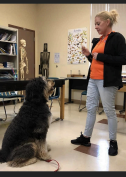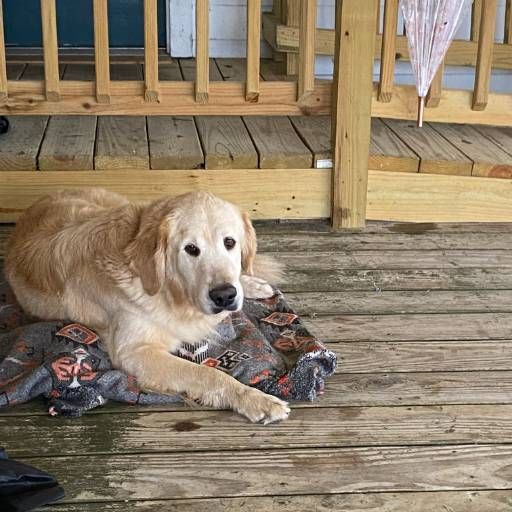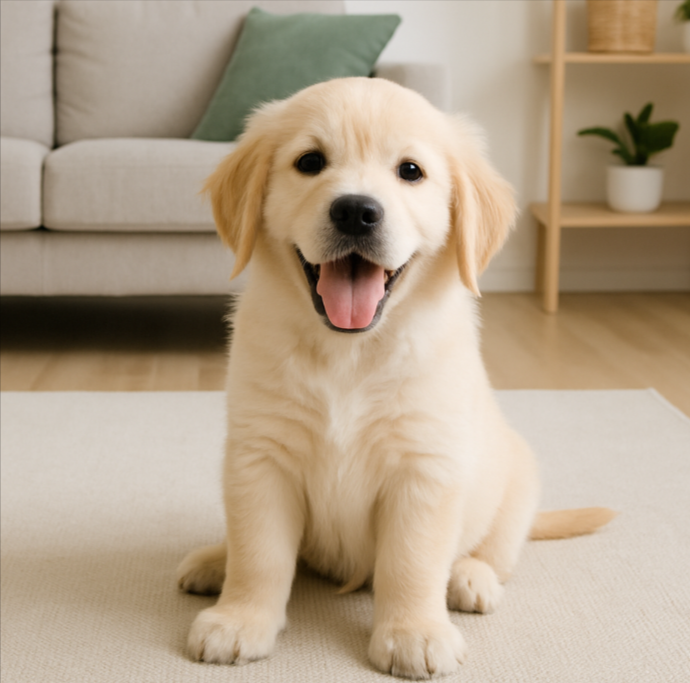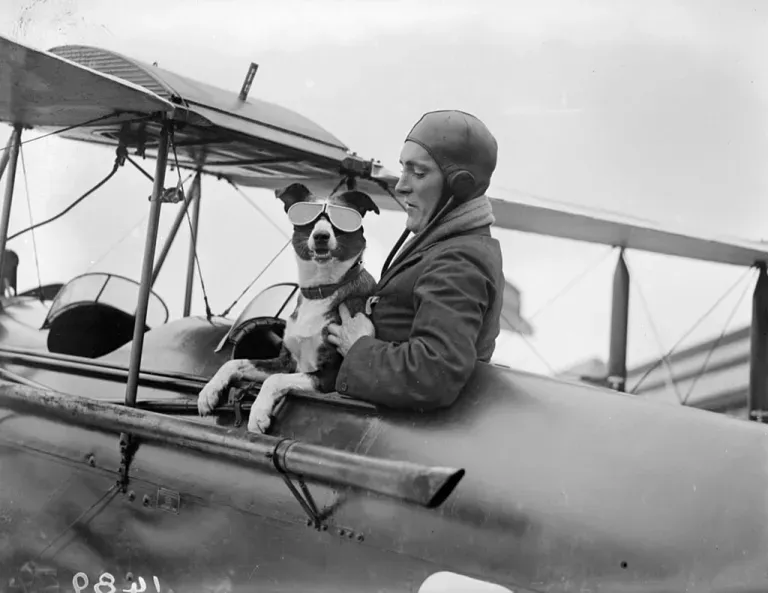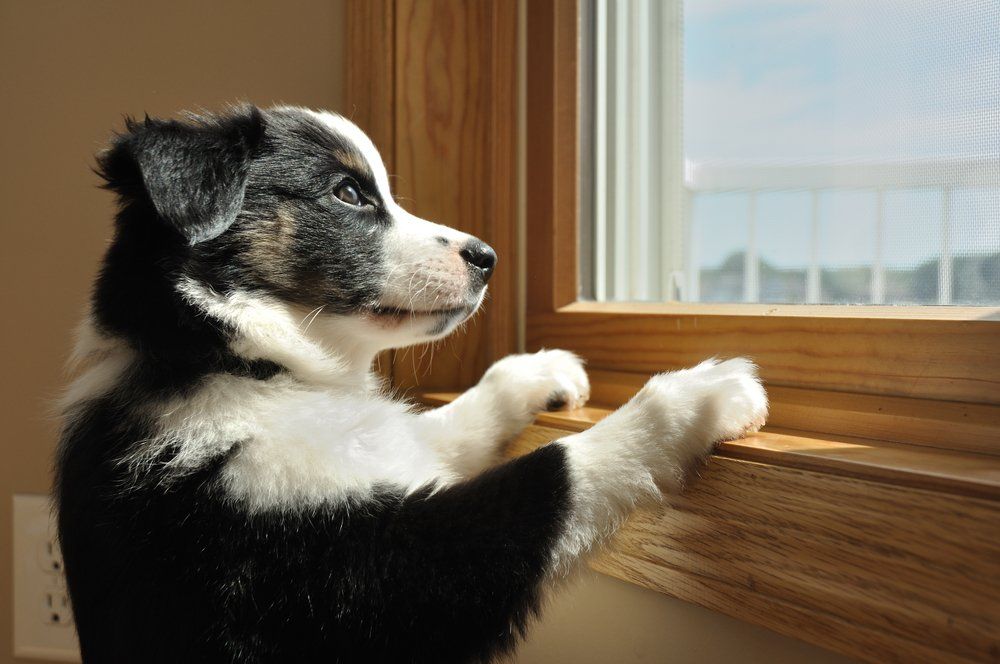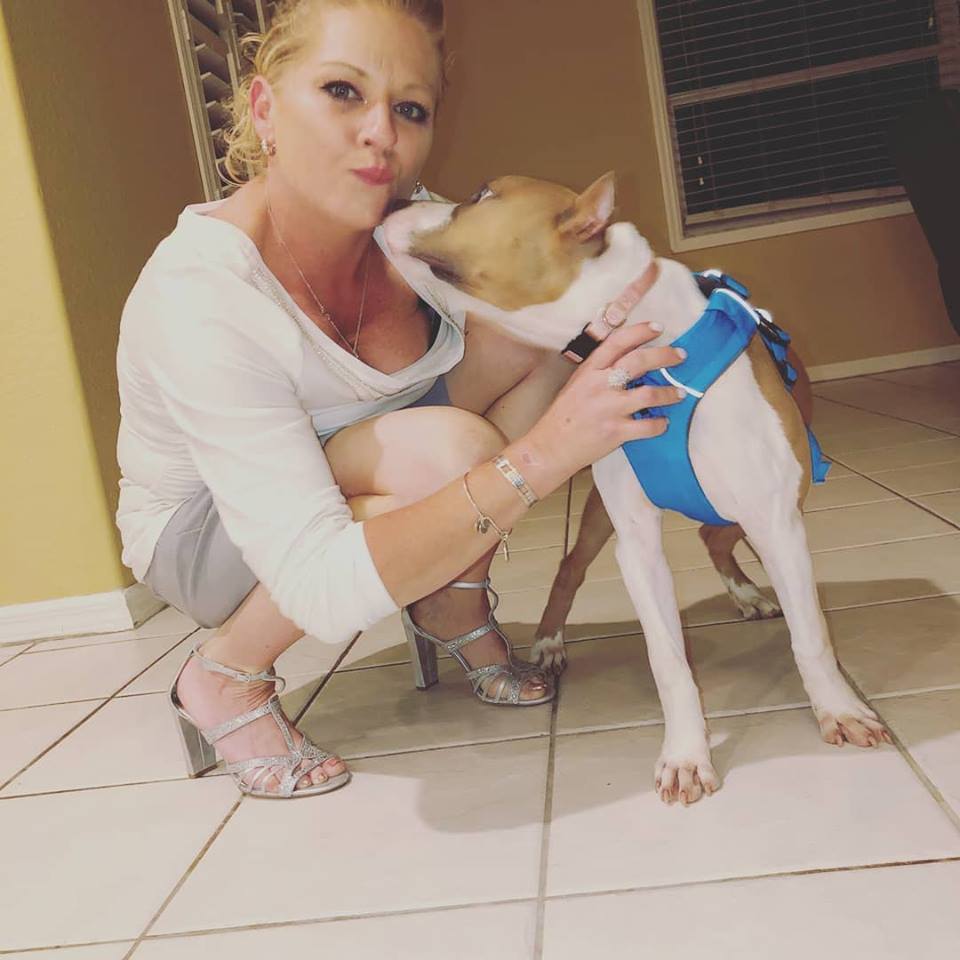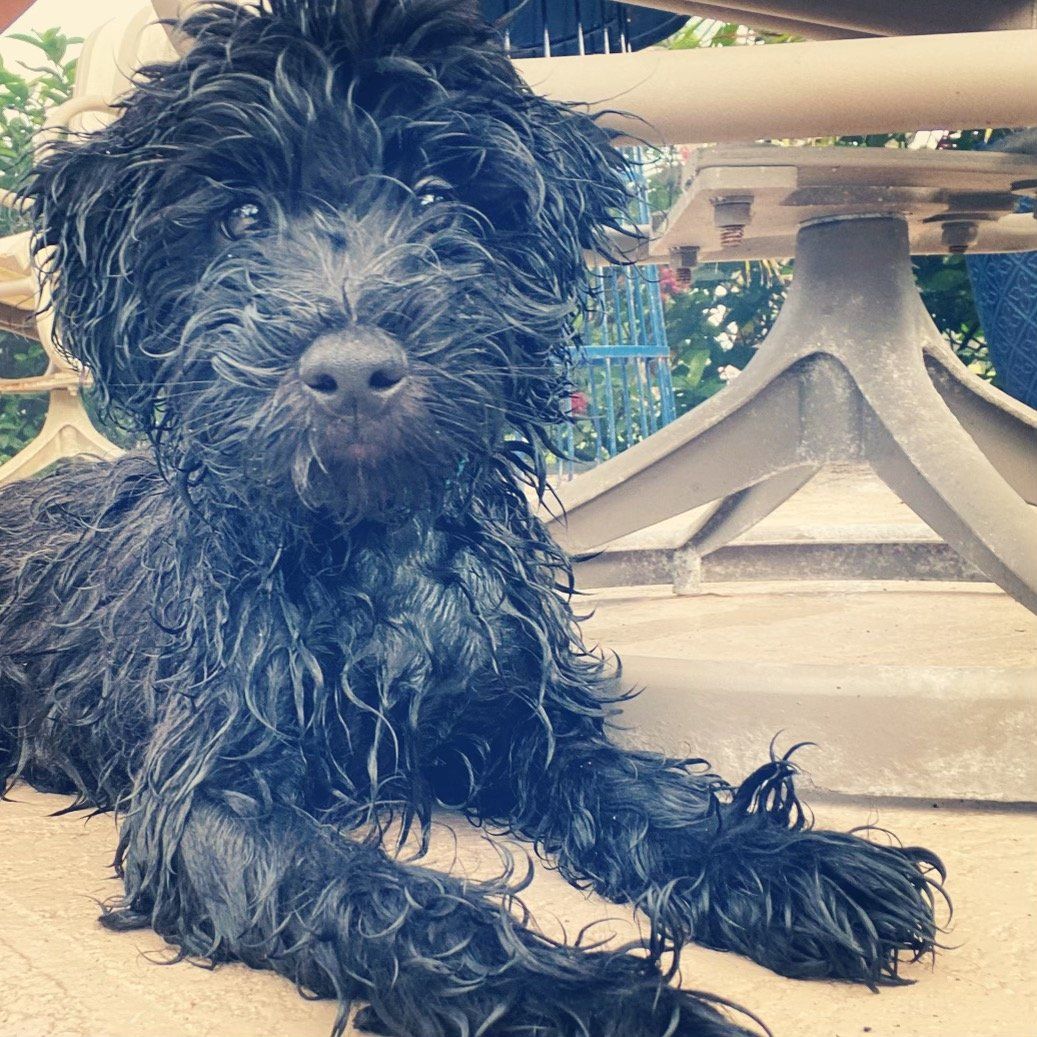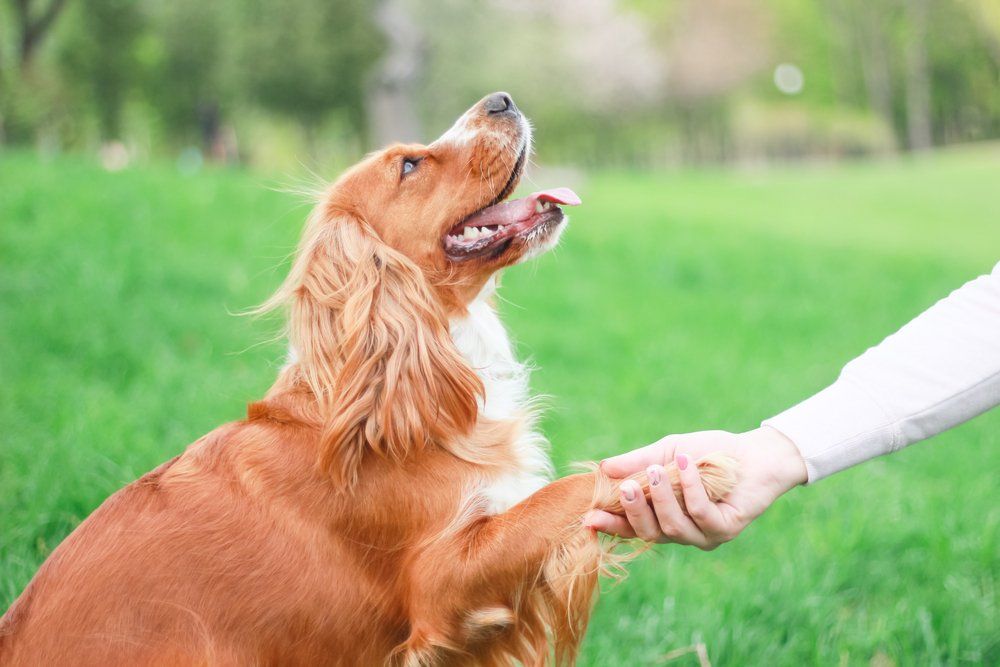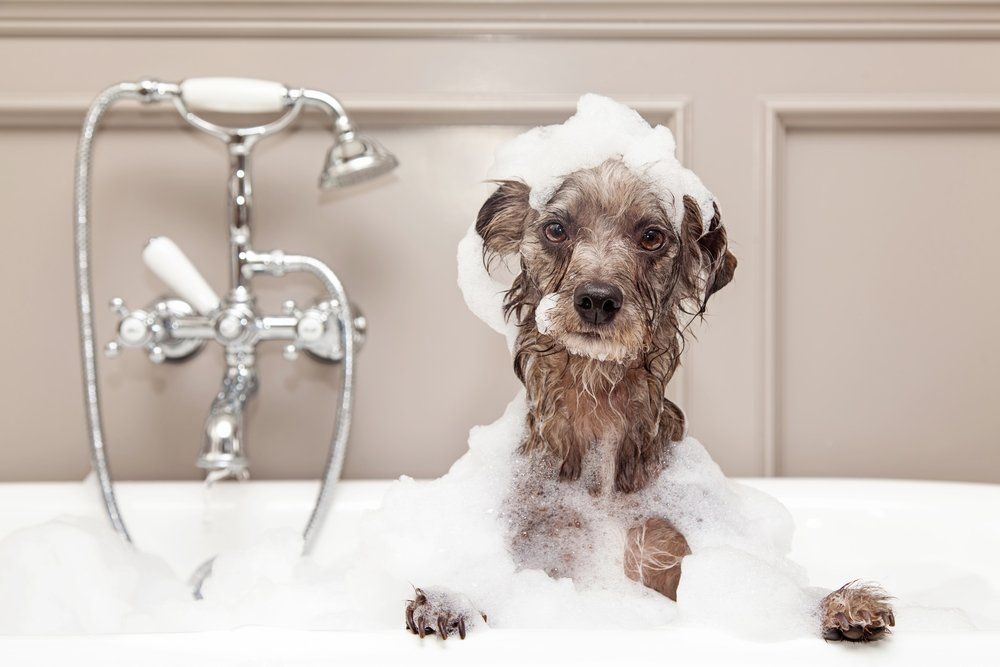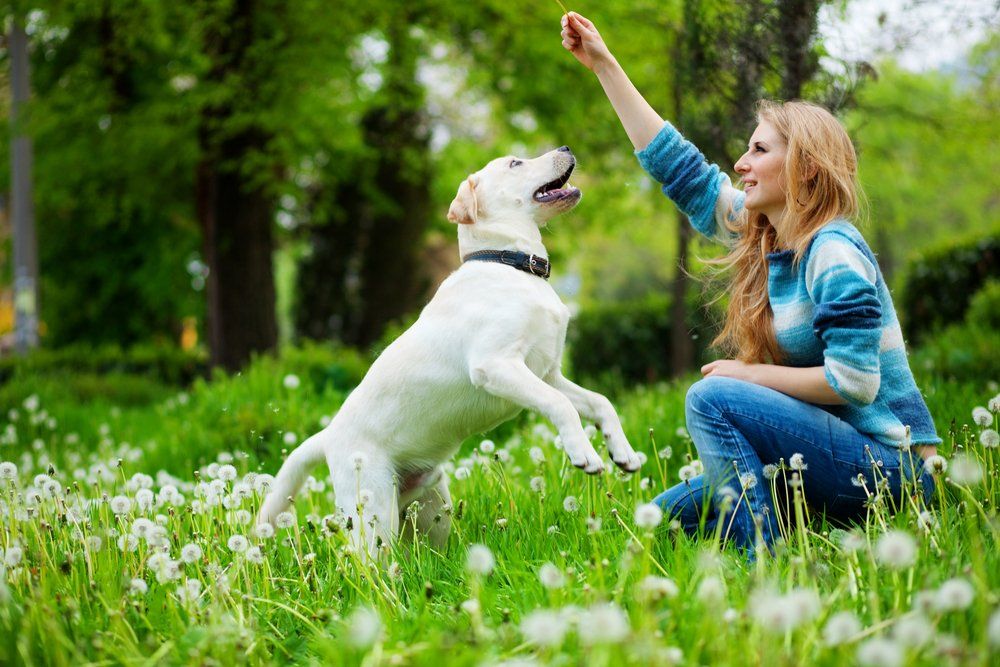Pro Tips on Potty Training Your Puppy with Bells
Potty training a puppy is a crucial step in raising a well-behaved adult dog. It requires patience, consistency and the right techniques. With patience, lots of positive reinforcement and a set potty training schedule, you are setting your new puppy up for success.
A structured potty training schedule can make the process smoother. It helps your puppy learn when and where to go. Here is a link to Dr. Dunbar’s Sirius Dog Training housebreaking schedule. Potty Training Puppy Schedule Use this schedule, trust us, it works!
Incorporating crate training can also be beneficial. It provides a safe space for your puppy and aids in housebreaking.
Using a bell is another effective method. It teaches your puppy to signal when they need to go outside.
This guide will cover all these methods. You'll learn how to use positive reinforcement and tackle common challenges. With the right approach, potty training can be a rewarding experience for both you and your puppy.
Why Potty Training a Puppy Matters
Potty training a puppy is essential for maintaining a clean home. Without proper training, accidents can lead to permanent odors and stains. It can also lead to frustration and confusion.
You, the human, can become frustrated with your new puppy while your puppy is confused and does not understand what you expect from him.
Beyond cleanliness and basic obedience, potty training fosters a strong bond between you and your puppy. It sets the foundation for a trusting and respectful relationship.
Training also contributes to your puppy's overall happiness. A well-trained puppy knows what is expected, reducing anxiety and stress from both you and your puppy.
Key reasons to potty train your puppy include:
● Keeping your home clean and sanitary.
● Strengthening the bond with your puppy.
● Ensuring your puppy is confident and secure.
● Having an obedient puppy with basic training
By committing to effective potty training, you are investing in a happy and well-adjusted dog. This early effort pays off with lifelong companionship and joy.
When to Start Potty Training Your Puppy
Begin potty training your puppy the moment they arrive home. Young puppies quickly adapt to routines and boundaries. Early training lays a solid foundation. Most puppies start potty training around 5 weeks old. This age aligns with their ability to understand routines. The mother will start to show the puppies where to eliminate and the breeder will also aid in the housebreaking. At 8 weeks, it is imperative to continue the potty training. Talk to your breeder, if you can, about what they did as far as the elimination area. Keep the training consistent and gentle to reinforce learning.
“There appears to be a narrow window of opportunity between 7 and 9 weeks of age for introducing house training most efficiently. Puppies started during this time tend to do much better and have far fewer accidents than puppies whose training is postponed until later. During this time, puppies develop location and substrate preferences away from their nesting area.” Steven, Lindsay Applied Dog Behavior and Training, Volume One pg. 67
Signs that your puppy is ready for potty training:
● Awareness of their environment.
● Basic understanding of commands.
● A regular eating schedule.
● You have your puppy already in home and ready to start
Training at this critical stage creates lifelong habits. Invest time early to ensure your puppy grows into a well-behaved adult dog. Patience and persistence are key, as puppies learn best from consistent and positive guidance.
Setting Up for Success: Supplies and Preparation
Proper preparation is vital for effective puppy potty training. Gather all necessary supplies before you start. This ensures a smooth training experience.
Create a checklist of essential items, including:
● A sturdy leash for outdoor trips.
● A harness or buckle collar.
● A comfortable, appropriately-sized crate.
● Tasty treats for rewarding good behavior.
● A bell to hang at the door.
Prepare a designated potty area outside. This helps your puppy associate the spot with bathroom activities. Make this area easily accessible for quick trips. Always use the same area and use a verbal cue “potty’ “go”, whatever cue you are comfortable with and reward right away.
Having these supplies ready streamlines the process. You're equipped to handle training challenges effectively. Preparation reduces stress and promotes consistency. With the right tools at hand, you boost your puppy's chances of success. Patience combined with preparation leads to an efficient and positive potty training journey.
Creating a Potty Training Schedule
Establishing a routine is key to potty training success. A structured schedule helps your puppy learn when and where to go. Consistency breeds confidence and reliability in young dogs.
Start by taking your puppy out first thing in the morning. Follow up with regular potty breaks throughout the day. This consistency reinforces their bathroom habits.
Here's a sample schedule to follow:
● Morning: Immediately after waking.
● Every hour or every other hour
● After meals: About 10-15 minutes post feeding.
● Every hour or every other hour.
● Before bed: Last thing at night.
Adjust the schedule as your puppy grows and their control improves. You might initially need breaks every one to two hours. Gradually extend the time as your puppy matures.
Consistency within your routine helps your puppy develop a strong habit. Use a specific command word like “go potty” to strengthen understanding. Reward your puppy immediately when they succeed.
Additionally, watching for cues is important. Signs like sniffing or circling indicate a need to go. An adaptable schedule caters to your puppy's unique needs, making training efficient. Through patience and a well-structured schedule, housebreaking becomes an attainable goal.
Using Positive Reinforcement with Potty Training
Positive reinforcement is an effective strategy in potty training a puppy. Rewarding good behavior encourages your puppy to repeat it in the future. This method involves using treats, toys and praise to show your dog they've done well.
When your puppy successfully potties outside, immediately reward them. Timely rewards strengthen the connection between the behavior and the reward. Enthusiastic praise is just as important as tasty treats.
Consider the following list of reinforcement methods:
● Offer a small, tasty treat.
● Give verbal praise with a cheerful tone.
● Affection, like petting or a brief play session.
The key is to be consistent with your rewards to establish clear communication. Avoid punishing accidents, as it can cause fear and confusion. Positive reinforcement encourages confidence and helps your puppy learn quickly. Stay patient and persistent, as consistent rewards will yield lasting results.
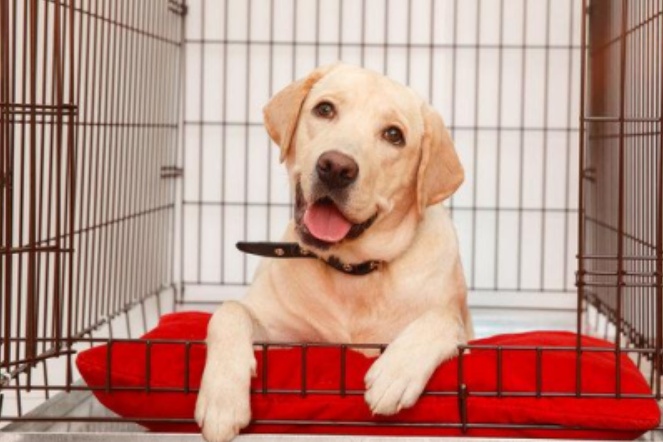
Crate Training and Potty Training: How They Work Together
Crate training is a valuable ally in potty training a puppy. Dogs naturally avoid soiling their sleeping space, which makes a crate a useful tool. Proper crate training can help your puppy develop bladder control.
Begin by selecting the right crate size. It should be spacious enough for your puppy to stand, turn, and lie down. However, it should not be so large that they can eliminate in one corner and nap in the other corner.
Here's how to effectively use crate training:
● Introduce the crate as a positive space.
● Start with short crate sessions and gradually extend time.
● Always let your puppy out for bathroom breaks.
● Introduce a Kong toy with a meal partially frozen in the crate
Establishing a crate routine is crucial. Ensure your puppy spends enough time outside the crate for exercise and potty breaks. A regular schedule helps them know when to anticipate potty trips, reducing accidents.
Consider these additional crate training tips:
● Place the crate in a quiet yet accessible area.
● Never use the crate as punishment.
● Keep crate time positive with toys or blankets.
● Introduce a Kong toy while in crate, use for a meal
● Watch our choice video on Kong toys and crate/potty/boredom training ● The Surprising Way Kong Toys Can CHANGE Your Dog's Life
By combining crate training with a consistent schedule and positive reinforcement, you can create a solid foundation for effective potty training. Your puppy will learn to associate going outside with bathroom breaks, helping them become house-trained.
Potty Training a Puppy with a Bell: Step-by-Step Guide
Training a puppy to use a bell for potty breaks is an innovative method. It teaches them to signal their need to go outside. This simple tool can be highly effective when used consistently.
Steps to Bell Training:
1. Choose a Suitable Bell: Select a bell that produces a distinct sound. Ensure it's reachable for your puppy.
2. Introduce the Bell: Every time you take your puppy out, gently ring the bell. Use a command like "bell" or “outside”.
3. Encourage Interaction: Hold a treat near the bell. When your puppy shows interest or nudges it, reward them immediately.
Practice and Patience
Training takes patience, so repeat this process consistently. Each time your puppy rings the bell, take them outside promptly. This reinforces the connection between the bell and going outdoors for potty.
Tips for Success:
● Be Consistent: Use the bell routine without fail, even on weekends.
● Positive Reinforcement: Reward your puppy every time they successfully ring the bell. ● Celebrate Small Wins: Acknowledge each successful ring with praise and a treat.
Avoid Common Mistakes
● Don’t allow playtime after ringing; this confuses the purpose.
● Ensure everyone in the household follows the same training steps.
● Don’t move the bell around the house, leave it in the same spot
By incorporating a bell into your potty training routine, you're providing your puppy with a clear way to communicate their needs. This encourages independence and reduces accidents indoors.
Troubleshooting Common Potty Training Problems
Even with a solid plan, challenges can arise during potty training. It's vital to address them calmly and constructively.
Handling Accidents
Accidents are a part of the process. Instead of getting upset, clean thoroughly to prevent repeat behavior. Use products specifically designed to eliminate odors. An effective enzyme cleaner is necessary, we recommend.
Inconsistent Progress
Sometimes a puppy might seem confused, leading to inconsistent progress. Check if everyone in the household uses the same commands and rewards. Consistent actions improve understanding. It is very helpful to have the potty schedule in a central area where everyone in the house can see it. We suggest leaving it posted on the refrigerator or by the door with the bell. Communicate with everyone in the house so everyone is on the same page.
Nighttime Struggles
Nighttime accidents are common as puppies struggle with longer stretches. Ensure potty breaks before bedtime and consider reducing late-night water intake. Be patient as this might take time to correct.
Solutions to Common Issues:
● Frequent Accidents: Increase the frequency of potty breaks.
● Reluctance to Go Outside: Praise and reward outdoor outings.
● Refusal to Use the Crate: Make the crate a positive space with toys and treats.
By staying consistent and patient, you can overcome these hurdles. Remember, every setback is a learning opportunity for both you and your puppy. Keep your training adaptable to your puppy’s progress.
Frequently Asked Questions About Housebreaking a Puppy
Housebreaking a puppy often comes with a set of common questions. Here are some insights into typical concerns new puppy owners may have.
How Long Does Potty Training Take?
Potty training duration varies. Depending on consistency and the puppy’s age, it might take weeks or even months. Each puppy learns at its own pace, so patience is key. If the schedule is followed it should take about 2-3 weeks but there can be setbacks which are not uncommon.
What if My Puppy Keeps Having Accidents?
Accidents are to be expected. If they persist, revisit your potty training schedule. Evaluate if changes in diet or environment might be contributing factors.
How Do I Know When My Puppy Needs to Go?
Recognize signs like sniffing or circling. Puppies often need to relieve themselves after meals, playtime, or naps.
Quick Tips:
● Start Early: Begin training as soon as your puppy arrives.
● Be Patient: Every puppy is unique; progress may vary.
● Stay Consistent: Stick to a regular routine for best results.
These answers provide a starting point for managing typical training questions. Adjust and adapt your approach as needed for successful housebreaking.
Final Tips for Potty Training Success
Embarking on your puppy's potty training journey can be challenging. However, with perseverance and the right strategies, it can also be rewarding. Here are some final considerations to enhance your training experience.
Focus on creating a supportive environment for your puppy. This involves using a consistent routine and maintaining a calm demeanor to foster a sense of security.
Key Tips:
● Stay Positive: Encourage progress with rewards.
● Keep Consistent: Follow a schedule daily.
● Adapt as Needed: Tailor your approach based on your puppy's growth and needs.
● Use the Sirius Puppy Housebreaking Schedule
● Perfect Potty Puppy Plan
Remember, patience is crucial. Celebrate each step forward and keep your training consistent for lasting success.
